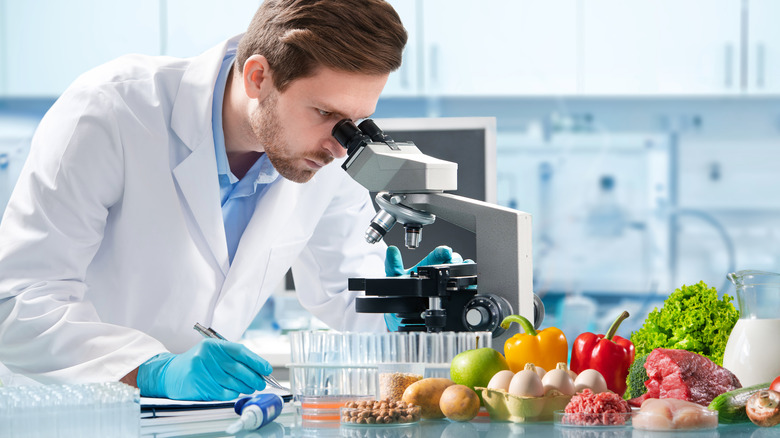The Scientific Origin Of The Maillard Reaction
You may not know it, but the Maillard reaction is the secret ingredient to all of your favorite foods. You may have never heard of it, and you might not understand the science behind it, but whether you know it or not, you are a fan of this wonder of chemistry. This chemical reaction is the reason most people love grilled meats, fresh-baked bread, roasted coffee beans, and vegetables.
The Maillard reaction is not, in reality, a single reaction at all. It's a series of smaller chemical reactions that occur when proteins and sugars on your food are heated under very specific conditions (via Serious Eats). In fact, it can be outright challenging to get the conditions just right. Even when the reaction was first discovered more than a century ago by Louis-Camille Maillard the process wasn't completely understood. Though Maillard might have been distracted because he had been studying these reactions with a very different objective in mind than getting the best sear on his steak (via NPR).
Maillard hoped to discover medicinal applications
Maillard was first drawn to research the chemical reactions that he would become famous for nearly 110 years ago (via NPR). He hoped that studying the reactions in raw food that occurred when it was heated (specifically those that changed its color and produced carbon dioxide) would allow him to develop new medicinal applications for diabetes and other illnesses. This was a time before insulin treatments, and Maillard may have hoped to discover a new form of treatment. Maillard thought understanding these reactions could have profound effects well beyond the kitchen (via NPR). Instead, he may have made the greatest impact on food science in modern history.
It's worth noting that even Maillard didn't fully understand these reactions after he had discovered them. A more detailed report would later be published by American John E. Hodge in 1953 (via Chemical & Engineering News). Thanks to these studies, chefs and gourmands around the globe can better understand the unique chemical dance between moisture, heat, and time that it takes to create beautifully toasted grains for beer, unlock coffee's natural sugars, and caramelize onions (via Serious Eats).
The 100th anniversary of this discovery was celebrated in Nancy, France in 2012. Maillard grew up in the nearby small town of Pont-a-Mousson. A few hundred scientists, and doubtless a few chefs, gathered there to celebrate his legacy over research papers and delicious foods that both involve Maillard's famous reaction (via NPR).

